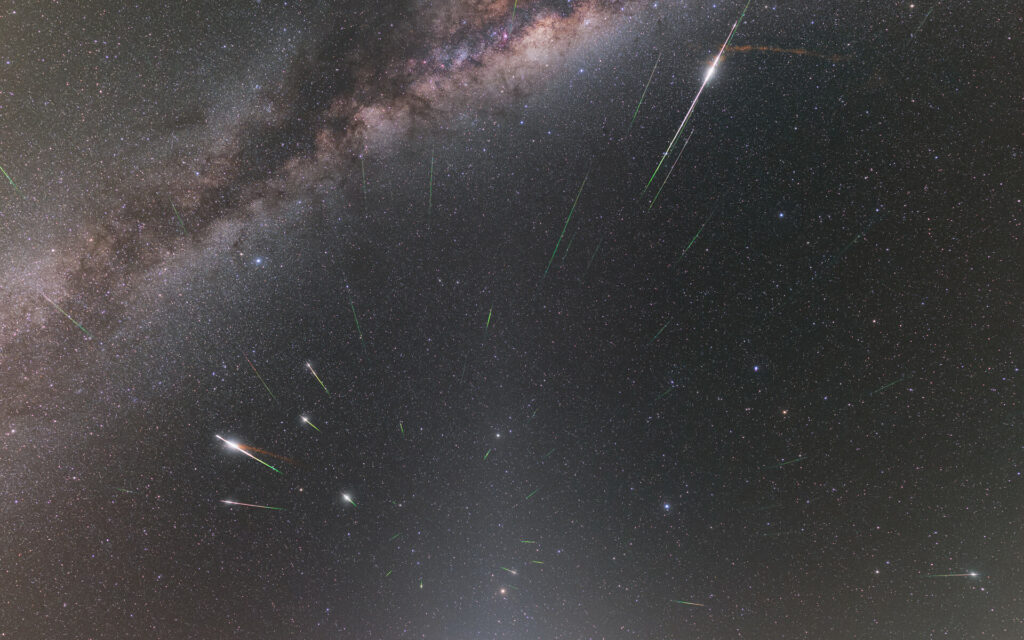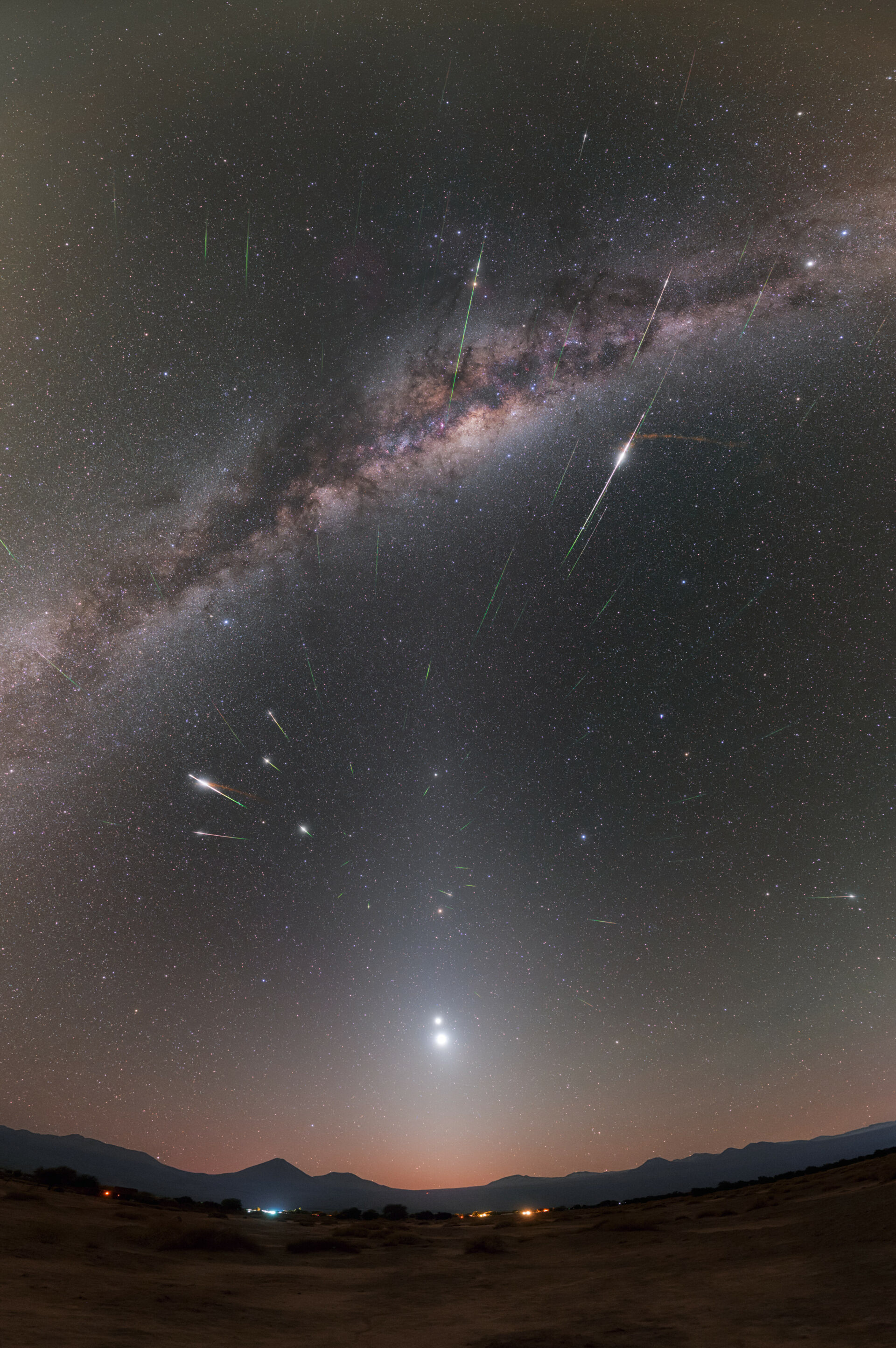This spectacular image captures the meteor shower of the η-Aquarids, which peaked at the beginning of May this year. The photo was taken near San Pedro de Atacama, a Chilean town located about 50 km from the Chajnantor high plateau, which is home to the APEX and ALMA radio telescope complexes.

The η-Aquarids are associated with the famous Halley comet (1P/Halley), returning to the Sun with a period of 73 to 78 years. It first appeared in the inner regions of the Solar System about 10 thousand years ago, and since that time has managed to throw out a huge amount of dust particles distributed along its orbit. Every time the Earth crosses its orbit, comet dust enters its atmosphere at a speed of 66 km/s, forming a large number of meteors and even fireballs. In the picture, they look like bright, light “darts” similar to flying arrows.
But not only meteors got into the photo, it is literally overflowing with astronomical phenomena. A very bright object below, near the horizon — Venus. Above it, lined up in an almost regular vertical line, several planets are visible in conjunction. Jupiter is directly above Venus, followed by bright red Mars, and Saturn is even higher. Such “parades of planets” happen rarely, usually every few decades.


The location of the planets in the image coincides with the zone of zodiacal light: a weak radiance that stretches like a light column from the bottom up towards the bright, crowded with stars area of the center of the Milky Way.
Zodiac light can often be observed in places far from the city illumination, after sunset or just before sunrise. The phenomenon occurs due to the scattering of sunlight on dust particles in the plane of the ecliptic. The sources of this dust are asteroids, comets, and Mars.
According to https://www.eso.org
Follow us on Twitter to get the most interesting space news in time
https://twitter.com/ust_magazine

